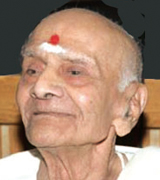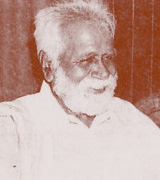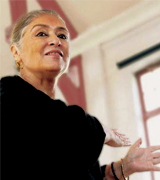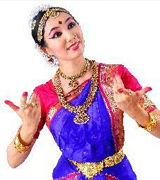CENTENARY FEATURE
Subbudu: the family’s sole calling card
P.V. KRISHNAMOORTHY

Irrespective of the many bureaucratic positions I have held and the awards I have received, I invariably introduce myself to people by saying, “I am Subbudu’s youngest brother”; that has opened many doors for me. In fact, all the members of the family exploit their one and only visiting card—“SUBBUDU”.
People have asked me why the name Subbudu. Is there a Telugu connection? Well, yes and no! My maternal grandfather was a tahsildar in the Guntur district of Andhra Pradesh. The family was at home with Telugu. When the boy was named Subramaniam, my uncles chose to nickname him Subbudu, in the true Andhra tradition, and the name stuck.
When Subbudu’s name is mentioned, some pictures of us in Rangoon float in front of me. Not many know about them, so let me recount some of them.
CENTENARY FEATURE
Dr. S. RAMANATHAN - An exemplary teacher
BANUMATHY RAGHURAMAN

“Sarali varisais were so easy. Why do the jantai varisais have to be so difficult Appa?” I remember asking my father. I must have been about four or five years old. I would strain my neck to look past the first string of the veena that was much too large for my tiny frame and reach over to the second string to play the jantai varisai. While we were learning fingering techniques on the veena guided by the white dots on the black frets, I would often wonder why the seven notes had to be spaced so far apart. I thought—what if I tried to place my fingers on the frets, which did not have the white dots, besides Sa and Pa? So, I gave it a try and I heard something new and very exciting. Immediately, I exclaimed “Appa! I have discovered a brand new raga!” And that is when he responded with a chuckle, “That is the raga discovered by Venkatamakhi and named Simharavam. It is also known as Hemavati”. I could also see him beaming with pride, a precious moment forever etched in my mind.
THEATRE
Reflections on the Indian stage
MAHESH ELKUNCHWAR

After studying History of Art from Panjab University, NEELAM MANSINGH CHOWDHRY joined the National School of Drama, New Delhi. She later started working in Rang Mandal at Bhopal’s multi arts complex Bharat Bhavan, in 1979. She came to Chandigarh in 1984 and started her own theatre group, The Company. She also taught at the Department of Indian Theatre, Panjab University, and is presently Professor Emeritus. She created a way of combining traditional folk performers called the Naqqals along with actors from Chandigarh. She has presented her plays at numerous national and international theatre festivals. Her group has performed for The London International festival of theatre, Uzbekistan festival of theatre, Festival d’ Avignon (France), festival of Perth, the Singapore arts festival, Japan Foundation of the Arts in Tokyo and Kyoto, Kampanagal festival in Hamburg, to name a few. Her significant plays include Yerma, The Mad Woman of Chaillot, Phaedra, Naga-Mandala,Blood Wedding, KitchenKatha, The Suit,The Wife’s Letter, and Dark Borders. She staged most of these plays in Punjabi that have been translated by the eminent poet Surjit Patar. She has received several honours like the Sangeet Natak Akademi Award (2003) and the Padma Shri (2011).
M.E.
SAVAL-JAVAB
A dream fulfilled
AKMARAL KAINAZAROVA IN CONVERSATION WITH ANJANA ANAND

The Centre for Indian Classical Dances, Almaty-Kazakhstan, presented a Bharatanatyam margam and traditional folk dances of that country at the Rukmini Arangam, Kalakshetra Foundation in March 2017. Veteran teacher N.S. Jayalakshmi and dancer-guru Padma Subrahmanyam presided over the function with warm words of appreciation. The performance was a tribute to Rukmini Devi Arundale.
Akmaral Kainazarova, alumnus of Kalakshetra, and ‘Honored Artiste’ of the Republic of Kazakhstan, initiated this venture through the “Centre for Indian Classical Dances, Almaty-Kazakhstan” which she established in March 2006. The years of dedication and responsibility as an ambassador of culture was evident in the training of her students. Akmaral is the first and only professional Bharatanatyam artist to establish a centre for Indian arts in Kazhakstan. The group has performed widely in India on invitation from ICCR, and has also performed in other countries, much to the delight of the young artists.


